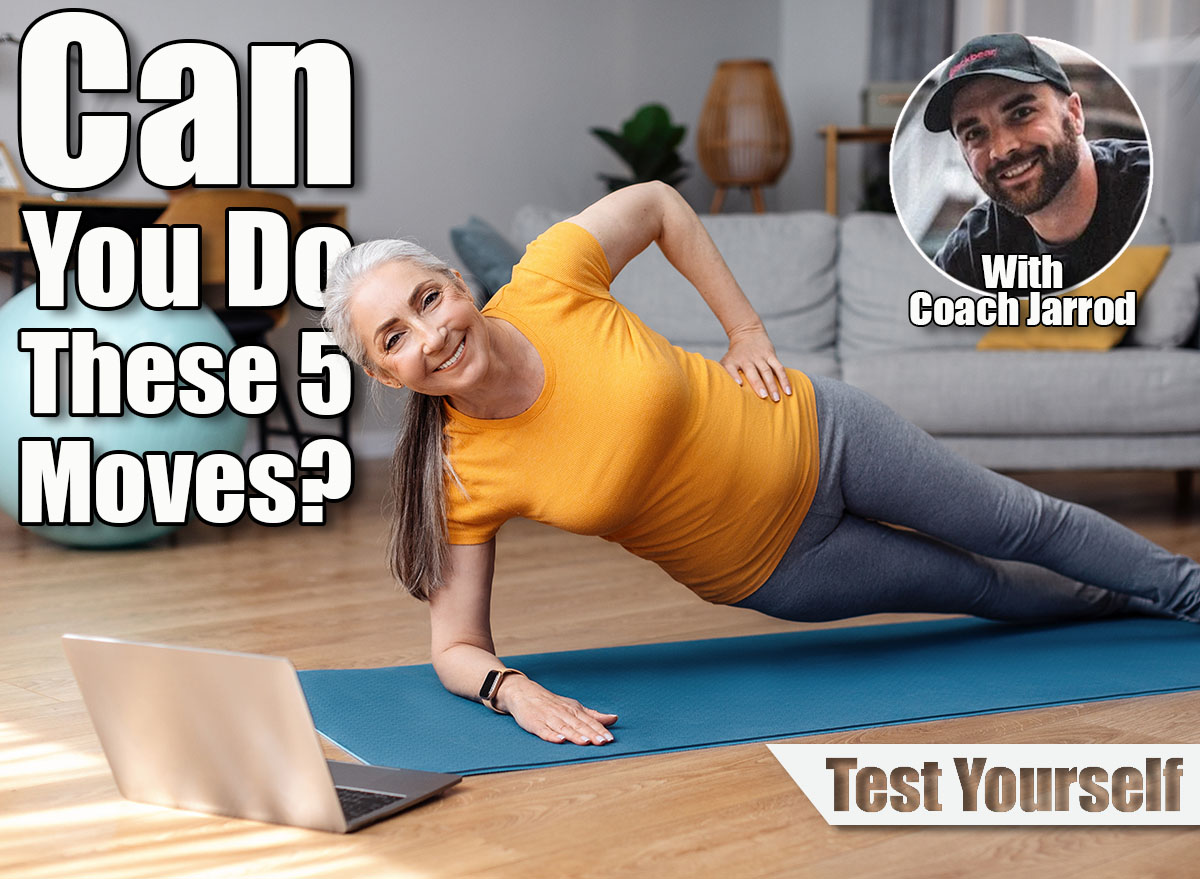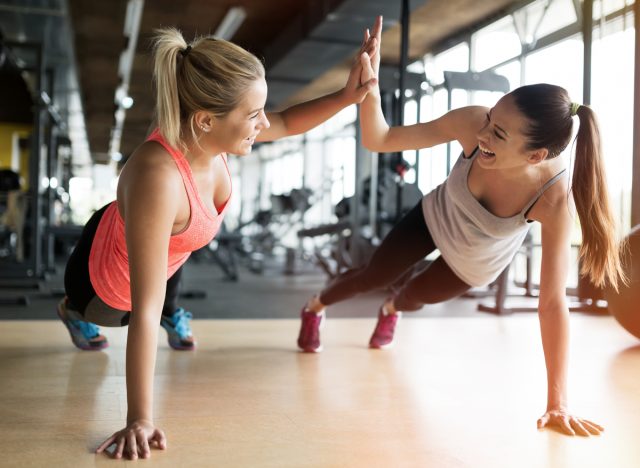If You Can Master These 5 Bodyweight Movements After 55, You’re Stronger Than 90% of Your Peers

Strength after 55 isn’t about lifting the heaviest weights or chasing personal records in the gym. It’s about how well your body moves. Real strength shows up when you can control your own weight with stability, coordination, and power. These are the qualities that keep you feeling capable, athletic, and resilient for years to come.
Bodyweight movements are the ultimate strength test. They reveal how efficiently your muscles, joints, and nervous system work together. When you can push, pull, squat, and stabilize your own body, you build strength that transfers to everything else—whether that’s carrying groceries, hiking with friends, or crushing a weekend pickup game.
These five moves challenge your body in ways machines can’t. Each one demands full-body control, mobility, and strength under tension. They’re the movements that separate the strong from the merely active.
If you can perform these with solid form, you’re operating at a level of strength and fitness that most people your age never reach.
Pushup
The pushup is one of the most complete upper-body strength builders you can do without equipment. It develops your chest, shoulders, triceps, and core while teaching your body to move as one unit. Mastering the pushup proves that you have real, usable strength—not just in your arms, but across your entire kinetic chain.
Muscles Trained: Chest, shoulders, triceps, core
How to Do It:
- Begin in a high plank position with your hands just outside shoulder-width.
- Keep your body in a straight line from head to heels.
- Lower your chest toward the floor by bending your elbows.
- Press back up to the starting position without letting your hips sag.
- Maintain tension through your core and glutes throughout.
Recommended Sets and Reps: 3 sets of 10 to 20 reps, resting 60 seconds between each.
Best Variations: Incline Pushup, Decline Pushup, Diamond Pushup
Form Tip: Keep your elbows at a 45-degree angle from your torso to protect your shoulders.
Bodyweight Squat
This foundational move builds leg strength, balance, and hip mobility. Squatting well after 55 keeps your joints healthy and supports the strength you need for daily life. It also reinforces strong glutes and quads, which protect your knees and lower back.
Muscles Trained: Quads, glutes, hamstrings, core
How to Do It:
- Stand with feet shoulder-width apart and toes slightly turned out.
- Brace your core and push your hips back as you bend your knees.
- Lower until your thighs are parallel to the ground.
- Drive through your heels to return to standing.
- Keep your chest tall and eyes forward the entire time.
Recommended Sets and Reps: 3 sets of 15 to 20 reps, resting 45 seconds between each.
Best Variations: Chair Squat, Tempo Squat, Jump Squat
Form Tip: Keep your knees aligned with your toes and avoid rounding your back.
Glute Bridge
Strong glutes improve posture, power, and balance. The glute bridge teaches you to engage your posterior chain, the muscles that keep you upright and stable. It’s one of the best movements for building strength in the hips and lower back while reinforcing core control.
Muscles Trained: Glutes, hamstrings, lower back, core
How to Do It:
- Lie on your back with knees bent and feet flat on the floor.
- Drive your heels into the ground and lift your hips.
- Squeeze your glutes at the top until your body forms a straight line from shoulders to knees.
- Hold for one second, then lower with control.
- Keep your ribs tucked and your abs engaged throughout.
Recommended Sets and Reps: 3 sets of 12 to 15 reps, resting 45 seconds between each.
Best Variations: Single-Leg Glute Bridge, Banded Bridge, Marching Bridge
Form Tip: Push evenly through both heels to prevent one hip from rising higher than the other.
Inverted Row
Pulling strength often gets overlooked, yet it’s essential for balanced muscle development and joint health. The inverted row strengthens your back, biceps, and grip while training your core to stabilize your body. It’s one of the best indicators of upper-body strength and posture control.
Muscles Trained: Lats, biceps, upper back, core
How to Do It:
- Set a sturdy bar or suspension trainer at waist height.
- Lie underneath it and grab the handles or bar with an overhand grip.
- Keep your body straight and your heels on the ground.
- Pull your chest toward the bar while keeping your core tight.
- Lower yourself slowly until your arms are fully extended.
Recommended Sets and Reps: 3 sets of 8 to 12 reps, resting 60 seconds between each.
Best Variations: TRX Row, Towel Row, Underhand Row
Form Tip: Keep your shoulders down and squeeze your shoulder blades together at the top.
Side Plank
The side plank develops deep core stability and shoulder endurance. It targets the obliques and hip stabilizers that protect your spine and improve your balance. Holding this position builds the kind of functional strength that supports every other movement you do.
Muscles Trained: Obliques, shoulders, glutes, hip stabilizers
How to Do It:
- Lie on your side with your forearm on the floor and elbow under your shoulder.
- Stack your feet and lift your hips so your body forms a straight line.
- Keep your core tight and shoulders stacked.
- Hold the position while breathing steadily.
- Switch sides and repeat.
Recommended Sets and Reps: 3 sets of 30 to 60 seconds per side, resting 30 seconds between each.
Best Variations: Side Plank with Reach, Side Plank Leg Lift, Elevated Side Plank
Form Tip: Keep your hips lifted high and avoid letting your shoulder roll forward.
How to Build Strength That Lasts

If you can perform all five movements with proper form, your strength and control exceed most people your age. These moves represent real, functional strength that supports every aspect of daily life.
To keep progressing:
- Train each movement weekly: Two to three sessions per week builds consistent improvement.
- Focus on control: Quality reps build better strength than rushed ones.
- Pair with mobility work: Stretch your hips, chest, and shoulders to improve range of motion.
- Rest and recover: Muscles rebuild stronger when you give them time between workouts.
Your body is the best training tool you’ll ever have. When you can push, pull, stabilize, and move with control, your strength becomes a skill you carry for life.